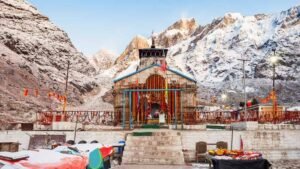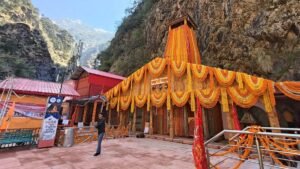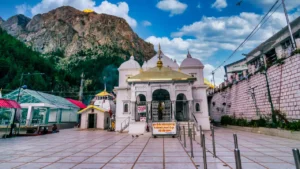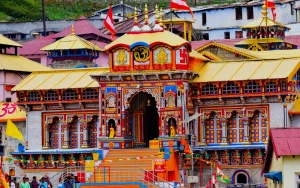Chote char dham
Chote Char Dham
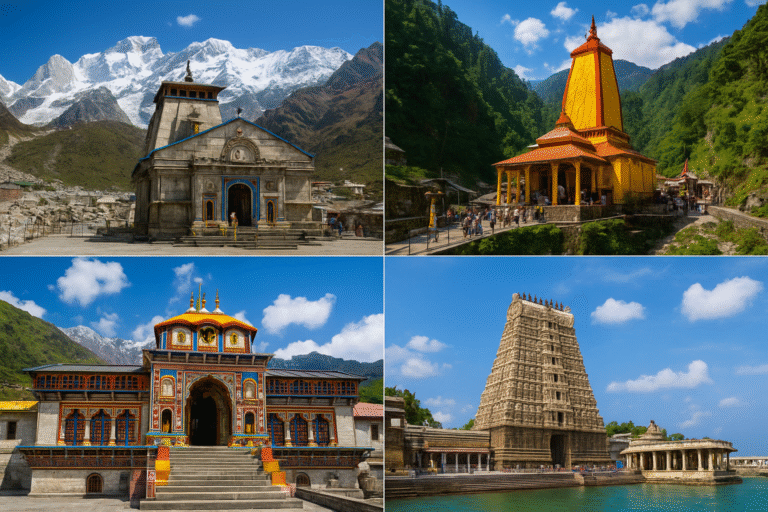

The Chhota Char Dham Yatra of Uttarakhand is regarded as one of the holiest pilgrimages in Sanatana Dharma, attracting millions of devotees every year who seek spiritual purification and liberation. These four sacred shrines—Yamunotri, Gangotri, Kedarnath, and Badrinath—are situated amidst the majestic Garhwal Himalayas and are believed to represent the eternal bond between humanity, divinity, and nature. Undertaking this yatra is not only a journey through snow-clad mountains, rivers, and valleys but also a deep spiritual experience that elevates the mind and soul.
The pilgrimage begins with Yamunotri, the seat of Goddess Yamuna, who is worshipped as the sister of Yama, the lord of death. According to ancient belief, a dip in the icy waters of Yamuna absolves one of the fear of death and grants longevity. The temple at Yamunotri, nestled against rugged peaks and glaciers, is both enchanting and powerful, reminding the pilgrim that life is fragile yet protected by divine grace.
From Yamunotri, the yatra continues to Gangotri, the origin of the sacred River Ganga. Legend says that Goddess Ganga descended from heaven to purify the ashes of King Bhagiratha’s ancestors, and Lord Shiva received her mighty flow in his matted locks to prevent destruction on earth. The temple at Gangotri is simple yet profound, its surroundings filled with the roar of the river and the serenity of the mountains. Pilgrims believe that bathing in the Ganges here washes away not only their sins but also those of their ancestors, leading to collective liberation.
The third destination is Kedarnath, one of the twelve Jyotirlingas of Lord Shiva and the highest among them. Located near the Mandakini River and surrounded by snow-capped peaks, the Kedarnath temple stands as a timeless symbol of devotion and endurance. According to the Mahabharata, the Pandavas sought Shiva here to absolve themselves of their sins after the great war. The temple, built in ancient stone architecture, survives as a testimony to resilience and divine energy, inspiring pilgrims to embrace penance, humility, and faith in the face of life’s challenges.
The pilgrimage culminates at Badrinath, dedicated to Lord Vishnu in his Badri-Narayan form. Situated between the Nar and Narayan mountain ranges, this temple is considered the ultimate seat of moksha. Legends narrate that Lord Vishnu meditated here, while Goddess Lakshmi sheltered him in the form of a Badri tree, giving the place its name. The temple is not only a spiritual destination but also a vibrant cultural center, where rituals, chants, and prayers unite thousands of devotees in collective faith.
Together, these four shrines form the Chhota Char Dham, guiding the devotee through every stage of spiritual evolution—purity at Yamunotri, liberation at Gangotri, penance at Kedarnath, and enlightenment at Badrinath. The journey is not merely a physical trek through mountains but a pilgrimage of the soul, teaching surrender, discipline, and divine love. For centuries, sages, saints, and seekers have walked this path, leaving behind footprints of devotion that continue to inspire modern pilgrims. The Chhota Char Dham Yatra thus remains a sacred symbol of faith, hope, and ultimate liberation in the heart of the Himalayas.

















































